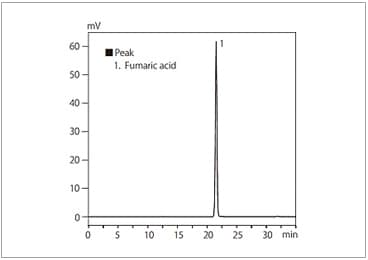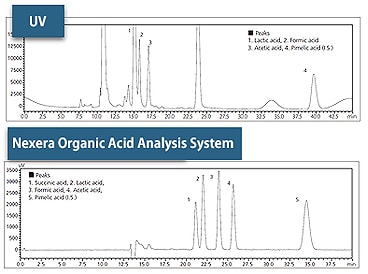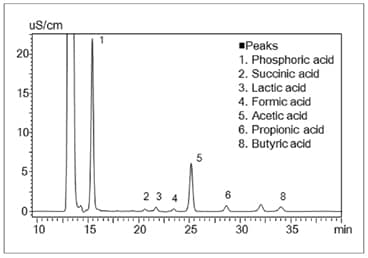Nexera Organic Acid Analysis System - Applications

Analysis of Organic Acid Counterions by Ion Exclusion Chromatography
The physicochemical and pharmacokinetic properties of active pharmaceutical ingredients change depending on the counterion used, and during drug development various counterions are tested to select the optimum salt. Residual inorganic impurities from catalysts or ions used during synthesis can also affect product solubility and stability, so it is extremely important that ion impurities are identified. We describe an example analysis that uses ion exclusion chromatography to increase separation selectivity for formic acid, acetic acid, fumaric acid, and maleic acid, which are organic acids frequently used for drug counterions.

Analysis of Organic Acids in Culture Medium Using Post-Column pH Buffering Organic Acid Analysis System
Organic acid analysis is often conducted using an ultraviolet absorbance detector. However, when analyzing media, which typically comprise complex matrices, the risk of contaminant components overlapping target components increases. Here, we introduce an example of analysis of organic acids in a culture medium using post-column pH buffered electrical conductivity detection in combination with a dual column oven, a system that provides both improved separation and high-selectivity detection.

Applying an Organic Acid Analysis System to Intestinal Flora Research
In recent years, it is becoming clear that intestinal flora in the gut contribute to the maintenance and preservation of the health of their hosts. Therefore, when examining the effects of intestinal flora on the host, the metabolites produced by intestinal flora can be considered to be related to these benefits. This article introduces an example of extracting metabolites produced by intestinal flora from mouse feces and measuring the short-chain fatty acids contained in the metabolites using an organic acid analysis system.



